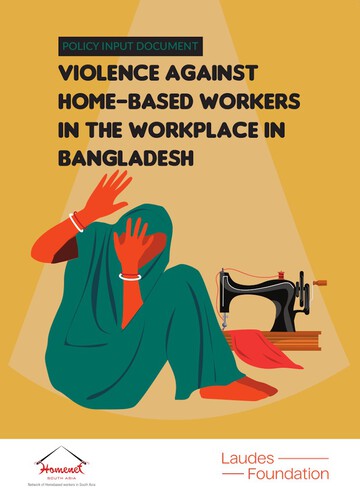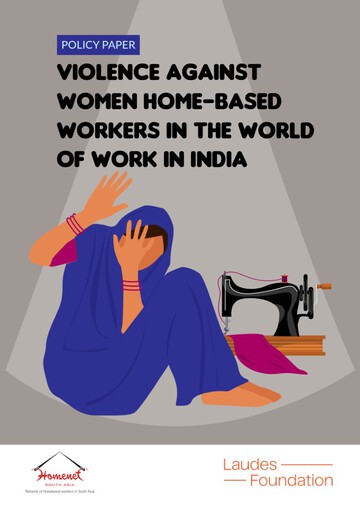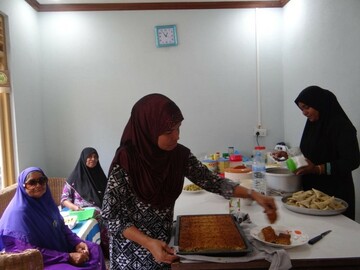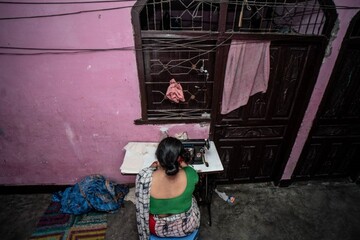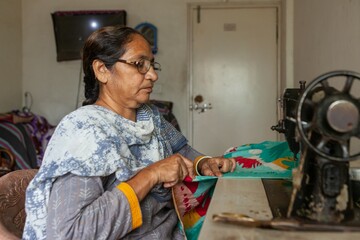Research & Insights
In the charming city of Sylhet, Bangladesh, lives a woman known to be soft-spoken yet doggedly determined. She is involved with her organisation, Labour at Informal Economy (LIE). As a leader of her
In the heart of Pallabi, a new change is being brought about by an energetic, resilient 30-year-old woman named Farzana. Once an invisible figure in her community, she has become a respectable leader
HomeNet South Asia (HNSA) recently organised an engaging regional webinar titled ‘Access to Markets’ on 29 April 2025, bringing together affiliate organisations from all across South Asia to discuss
As a community leader from a small settlement in Nepal, Nisha Sapkota’s boldest move was to take a glass of dirty water to the drinking water office in her district, demanding to know if the officials
A 30-year-old home-based worker (HBW) from the Jatrabari cluster in Dhaka, Laiju Akter has transformed her life and the lives of countless others through her unwavering determination and leadership
Sharda Mishra, a single woman from Budhanilkantha Municipality, has faced significant challenges in her life, particularly after the death of her husband. She experienced discrimination from her own
Payalben Hiteshbhai Ranat, a home-based worker from Isanpur, Ahmedabad, truly embodies the phrase, "Be the change you wish to see."
In September 2019, with support from Comic Relief, HomeNet South Asia and WIEGO collaborated on the Power Up programme. It was designed to create a global movement of home-based workers by
HNSA is implementing the European Union’s co-funded “Hidden Homeworkers” project across India, Nepal and Pakistan. Within this project, wage cards were developed and distributed by HNSA grassroots
It’s a Sunday morning during monsoons in Lalitpur, a settlement on the outskirts of Kathmandu City and Krishna Debi is preparing Chattamari, fondly called ‘Nepali Pizza’ for some customers who sought
Driving around Bhutan’s capital, Thimphu, will bring you face-to-face with many awe-inspiring structures – one of them in the Supreme Court. The lavish building is adorned with colourful, traditional
Far away from Male, Gadhdhoo is a small island that’s known for its remarkable mat weaving tradition. Handcrafted largely by women, home-based workers from the Thundukuna community, the woven mats are
The imposing hills of Taplejung, a district in Eastern Nepal, are carpeted with large cardamom plantations. One of Nepal’s leading large cardamom producing districts, Taplejung contributes the world’s
The Eastern Himalayas straddle three South Asian nations, Nepal, India, and Bhutan, which also happen to be the main producers of large cardamom, a specialty spice that enjoys wide appeal across South
The ocean is the lifeline of the Maldives. It is the calming blues of the ocean that draws in tourists to the country. And it is the food from the oceans that sustains the lives and livelihoods of
Deepa, a home-based worker lives with her family in Tirupur, Tamil Nadu, India. She has been working as a home-based, garment trimmer for the past eight years and her husband works as a master cutter
There are more than 67 million home-based workers in South Asia, of which a majority are women. Yet, they remain one of the most invisible sectors of informal workers in the region. Vulnerable women
For SEWA Ruaab the pandemic provided a unique scenario – a chance to reinvent, breathe life into a struggling enterprise. Founded in 2010, Ruaab is rooted in the Self-Employed Women’s Association
How A Grassroot-Level Organiser, In Ahmedabad, India, Gave Up Her Daily Wages In Order To Organise Her Community And Link Them To Basic Services. Ramilaben lives in a crowded settlement of over 300
How A Newly-Confident Grassroot-Level Organiser Helped Hundreds Of Women Access Work During The First Wave Of The Pandemic. “I wouldn’t even have the courage to speak,” Noorbanu says, recalling her
A Home-Based Worker Leader Dedicates Her Energies To Building Awareness On The Issue Of Violence Among Women Workers And Their Families. “Just a few months ago, one of the home-based workers in my
A Home-Based Worker Leader From Nepal’s Kathmandu Valley Is Ensuring Voice To Victims Of Violence. Bhagbati Gautam has been a home-based worker for more than a decade, working and living in Bhaktapur









